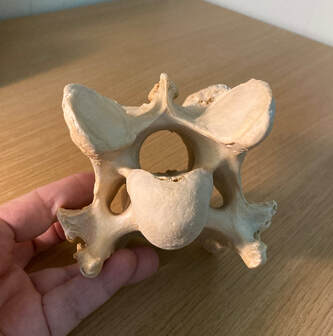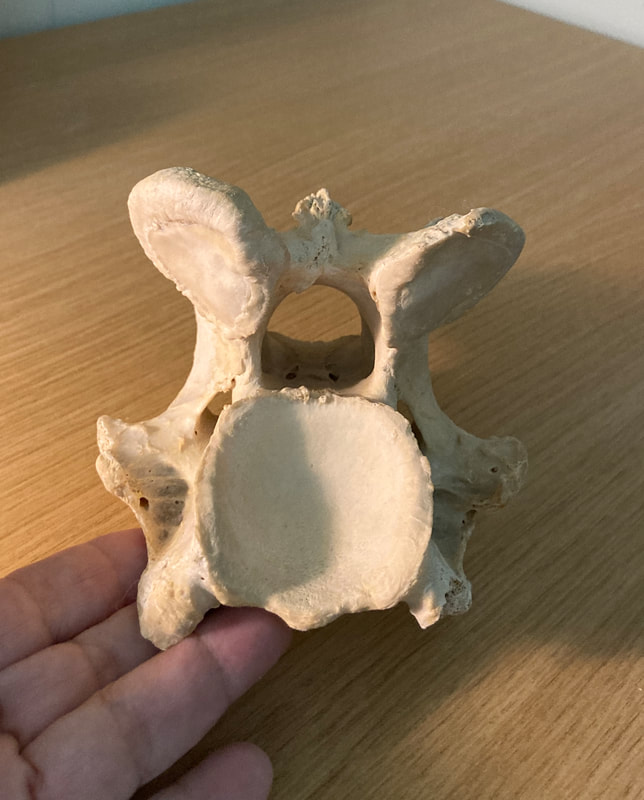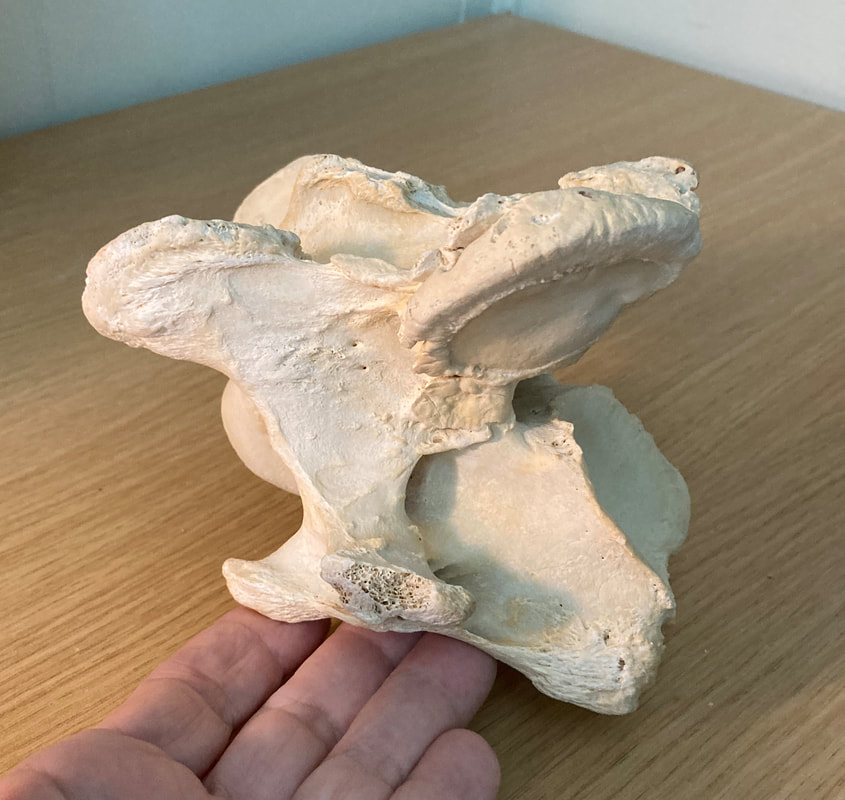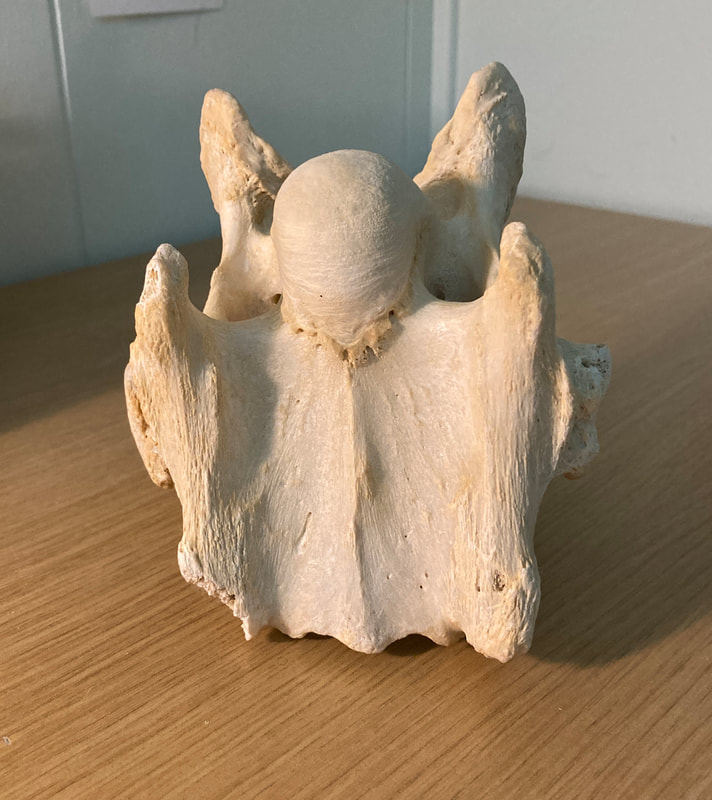|
Vertebrates are animals with hard internal skeletons—and specifically, backbones. The backbone or spine is a series of bony vertebrae that protect the spinal cord and the nerves that branch from it. Vertebrates include bony fishes, all amphibians and reptiles, birds, and mammals. Sharks and their relatives are vertebrates too, but their skeletons are composed of cartilage instead of bone.
This first view is from the end that points toward the head. The back of the neck would be on top, and the front of the neck on the bottom. The opening in the middle is where the spinal cord passes through, and the smaller openings on each side are for spinal nerves. The rounded, triangular knob is part of the top intervertebral joint of the vertebral body, the part which supports the most weight. The two smooth flat areas on each side above the knob make up part of the facet joints that also connect the vertebrae.
Something unexpected happened when I set the vertebra down on its tail end. I found that it had a surprise—one that was hiding in plain sight until this moment. The bony structure was the same as it had always been, but here was something new. Do you see it? “Numinous” is an older word, and uncommon now. It refers to something that is spiritually elevated, supernatural, incapable of being described or understood; mysterious. It’s from “numen,” a Latin word, meaning a presiding divinity or the spirit of a place. Numen may also mean creative energy or genius.
Do I believe there is literally an “angel” in this vertebra? No—but I do think my seeing an angel in this shape is no accident. Human brains and minds have also been molded by function—and culture—for tens of thousands if not millions of years. This “angel” is an example of a different level of meaning residing in common objects. It’s numinous. P.S. If you saw something other than an angel, no problem. Whatever you saw is right.
4 Comments
|
Categories
All
Archives
January 2024
|




 RSS Feed
RSS Feed